"Everything they do is done with great secrecy behind closed doors... Their main purpose is to keep everything quiet so they can say: 'Nuclear power is so safe. Just look, we've operated all these years without hurting any of the public.' They have accidents all the time. They just don't call them accidents. They call them 'incidents' and 'occurrences.' Mild? They may be, they may not be, but they are possible precursors to something more serious."
That was Lyn Harris Hicks. She's a 30 year resident of San Clemente, and has lived by the nuclear reactors at San Onofre for all these years. She and the Coalition for Responsible and Ethical Environmental Decisions have been fighting to open up the culture of secrecy pervading the nuclear power plant. And on Sunday, The OC Register decided to join them in unearthing some of the radioactive, dangerous secrets of San Onofre.
Is the power plant really as safe as it's supposed to be? Is it vulnerable to terrorist attacks? Is it vulnerable to accidents? Is it just a disaster waiting to happen? Or is this just all being over hyped?
Well, San Onofre seems quite safe... Isn't it?
Overall, San Onofre gets good grades from the [Nuclear Regulatory Commission]. Seven years elapsed between its last two major enforcement actions. But some neighbors don't trust the commission. Last year, radiation 16 times higher than that allowed in drinking water was found beneath the decommissioned reactor known as Unit 1. The commission called it "troubling" but said it was within radiation protection limits.
Well, maybe things aren't as great as they seem at San Onofre. Even the best and most "perfect-seeming" of systems are still run by imperfect people. And yes, people make mistakes.
So just how safe is the San Onofre plant?
How safe is San Onofre? The last major enforcement action issued by the commission to San Onofre was on Sept. 13, after liquid radioactive waste leaked from a truck in Utah. The tanker's discharge valve was improperly closed and sealed.
The action before that was on Dec. 15, 1999, after operators failed to recognize a condition that rendered inoperable a diesel generator and battery chargers.
While violations serious enough to garner official dings are fewer and farther between than they were a decade ago, there are still many minor incidents – some reported by San Onofre itself. An Orange County Register review of commission reports shows San Onofre workers:
•Improperly labeled a container of radioactive material, which wound up in a chemistry-lab trash can.
•Allowed debris to collect in water-storage tank enclosures, which could block flow in an emergency.
•Failed to promptly identify trapped air in safety-injection suction lines, which could damage emergency core cooling-system pumps.
So just how safe is San Onofre? Aging infrastructure isn't safe. Radioactive water below the plant isn't safe. And oh yes, an open target for terrorist attack definitely isn't safe.
Oh yes, and how about that tritium?
That's not much comfort to Lyn Harris Hicks of San Clemente, who has lived beside the reactors for about 30 years.
She is deeply troubled that radioactive tritium was found last year in groundwater beneath a defunct San Onofre reactor more than a decade after it ceased operations. Public health was not in danger, the commission and Edison said: Every year, people are exposed to about 300 millirems of radiation from natural sources. Anyone in contact with the water would have received about 1/10 millirems.
Harris Hicks is skeptical. "Tritium into the beach is the most important issue to us," she said. "This indicates it may have been seeping into the ground there all those years. We have our young surfers down there all the time. … That's the problem of nuclear radiation, of course. It permeates."
OK, so tritium is one of the least dangerous radionuclides. But hey, that still isn't saying too much. It's still carcinogenic. And yes, continued exposure to tritium can be quite dangerous. It might just lead to cancer.
So what does all of this mean? No matter how "safe" San Onofre is made, it's still doing something very dangerous. And no matter how "safe" nuclear power is made, it's still very dangerous. And Dr. Helen Caldicott reminds us why:
The people [promoting nuclear power] are not biologists, they're not geneticists, they're not physicians. In other words, they don't know what they're talking about. And that makes me very annoyed. First of all, every reactor produces about [20 to 30] tons of highly radioactive waste a year. The majority of it is very long-lived and will have to be isolated from the ecosphere for hundreds of thousands of years ... As it leaks into the environment, it will bio-concentrate by orders of magnitude at each step of the food chain: algae, crustaceans, little fish, big fish, us.
It takes a single mutation in a single gene in a single cell to kill you. [The most common plutonium isotope] has a half-life of 24,400 years. Every male in the Northern Hemisphere has a small load of plutonium in his gonads. What that means to future generations God only knows -- and we're not the only species with testicles. What we're doing is degrading evolution, and not many people understand that.
I guess not. I guess we still haven't realized just how dangerous the health effects of nuclear power can be. And of course, nuclear power plants still aren't prepared for possible terrorist attacks. These things really are ticking time bombs, just waiting to be set off.
So what can we do about it? Well, maybe we shouldn't allow for these nuclear power plants to continue operating. Maybe we shouldn't count on nuclear power as a panacea for our climate crisis. And yes, maybe we shouldn't rely on the unreliable power from nuclear power plants like the one at San Onofre.
So maybe residents in San Clemente like Lyn Harris Hicks do have reason to be worried. Nuclear power isn't reliable. It poses health risks. It creates open targets for terrorists. And perhaps, we shouldn't be counting on nuclear energy to power our lives here in Southern California.
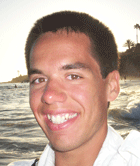
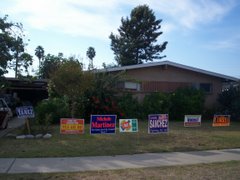

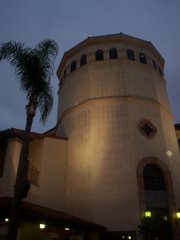


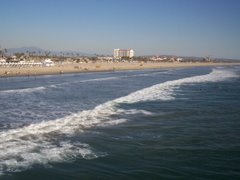
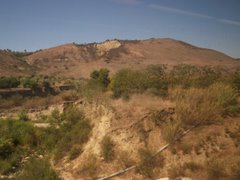

No comments:
Post a Comment